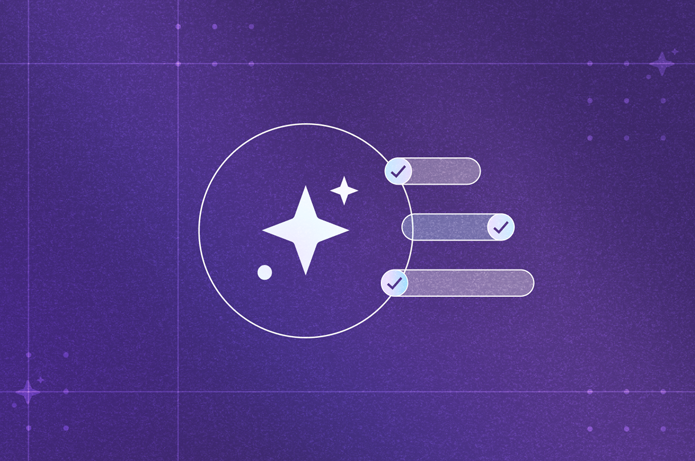This is Part 3 of our blog series, Supporting Neurodiversity in the Workplace
The symptoms of attention-deficit/hyperactivity disorder (ADHD) have a significant influence and serious impact on the workplace. According to a recent survey, 60% of adults with ADHD say they’ve lost or changed a job due to their ADHD symptoms.
Dr. Amy Marschall, Psy.D recently hosted a session on ADHD for Spring Health’s Women's ERG, and says:
“Employers should prioritize support for employees with ADHD because each individual possesses a unique skill set and strengths that other employees might not have. In general, people with ADHD tend to be highly creative and often work well in high-pressure situations. Personalized support from People leaders will foster their strengths and empower them to be their best selves.”
Helping employees with ADHD succeed requires training your People leaders to recognize the unique symptoms of this behavioral condition, show empathy, and normalize conversations around it.
This can present a dynamic challenge for employers because there is no “one size fits all” solution when it comes to neurodiversity.
Understanding the nuances of employees with ADHD
No two individuals with ADHD are the same. Each experiences the symptoms and severity in their own unique way. There are different subtypes—inattentive, hyperactive, and combined type—which present an employee’s strengths and weaknesses in the workplace differently.
It’s essential to gain a deeper understanding of these dynamics and apply that knowledge to the way you manage and support your employees with ADHD.
The following information, resources, and proven strategies can help you determine the management practices that give your neurodivergent employees the best chance to succeed.
What is ADHD?
ADHD is a neurodevelopmental disorder affecting both children and adults. It is described as a persistent or ongoing pattern of inattention and/or hyperactivity-impulsivity that interferes with the functions of daily life or typical development.
The ADHD Awareness Month Coalition simplifies the disorder in this easily digestible way:
“When someone has ADHD, they have a different mental and emotional system of evaluating what to do, and when to do it. They prioritize tasks according to emotional importance.”
Recognizing the symptoms of ADHD
The diagnosis of ADHD is outlined by the American Psychological Association in the DSM-5 as “a lifelong, persistent pattern of inattention and/or hyperactivity-impulsivity that interferes with functioning or development across time and settings.”
The criteria medical professionals use to diagnose ADHD must include five or more symptoms classified as “symptoms of inattention,” or five or more “symptoms of hyperactivity/impulsivity.”
These can include the following symptoms:
ADHD symptoms of inattention
- Makes careless mistakes/lacks attention to detail
- Difficulty sustaining attention
- Does not seem to listen when spoken to directly
- Fails to follow through on tasks and instructions
- Exhibits poor organization
- Avoids/dislikes tasks requiring sustained mental effort
- Loses things necessary for tasks/activities
- Easily distracted (including unrelated thoughts)
- Is forgetful in daily activities
ADHD symptoms of hyperactivity/impulsivity
- Fidgets with or taps hands or feet, squirms in seat
- Leaves seat in situations when remaining seated is expected
- Experiences feelings of restlessness
- Has difficulty engaging in quiet, leisurely activities
- Is “on-the-go” or acts as if “driven by a motor”
- Talks excessively
- Blurts out answers
- Has difficulty waiting their turn
- Interrupts or intrudes on others
How does ADHD affect workplace performance?
The Attention Deficit Disorder Association characterizes ADHD as “a highly genetic, brain-based syndrome that has to do with the regulation of a particular set of brain functions and related behaviors. These brain operations are collectively referred to as “executive functioning skills” and include important functions such as attention, concentration, memory, motivation, and effort, learning from mistakes, impulsivity, hyperactivity, organization, and social skills.”
Common challenges in the workplace presented by ADHD symptoms of inattention or hyperactivity/impulsivity can result in decreased performance or output, and poor work product.
These can be directly attributed to the inherent difficulties with maintaining attention, the brain function that enables us to initiate an activity, organize the components, and effectively manage tasks), and working memory.
Additional symptoms that directly impact the productivity and success of employees with ADHD may include the following:
- Lack of concentration, distractibility, and difficulty focusing
- Time management issues
- Lack of interpersonal skills
- Procrastination or lack of motivation
- Poor communication skills
5 ways to better support employees with ADHD
Establishing the foundation of an open, honest, and accepting company culture begins with your People leaders. Here are some of the proven strategies, best practices, and resources you can leverage to transform your organization almost immediately.
Leadership training
Expert-led training is one of the most important steps to properly equip your People leaders with the tools to recognize the symptoms of ADHD and strategically initiate sensitive, confidential conversations with employees, when appropriate.
Create an inclusive culture
Cultivate a workplace environment that enables each employee with ADHD to have their unique needs met, regardless of neurotype. A consistent support system will help ensure success in the workplace, without having to request accommodations.
Generate opportunities for normalized conversations
Empathy and understanding are the most effective methods to break down the barriers—often reinforced by the stigma of a neurodivergent or mental health diagnosis—and normalize open, honest conversation.
A workplace environment that promotes honest conversations initiated by People leaders can destigmatize ADHD and encourage neurodivergent employees to seek the support they need.
One proven strategy to help initiate meaningful conversations in the workplace is to send a casual, “Did You Know” themed email or Slack message to all employees. This can help illuminate the more common symptoms of ADHD, reinforce the confidential channels of communication for employees to utilize if they identify with any of the symptoms, and remind them about their mental health benefits.
Offer reasonable accommodations
ADHD is recognized as a disability under the Americans with Disabilities Act. Some employees with ADHD require accommodations in the workplace to support their challenges.
But not everyone who is diagnosed is considered a “qualified individual.” The determination is based on whether the symptoms substantially limit any major life activity.
So, we suggest providing reasonable accommodations without demanding excessive proof. This will encourage employees to obtain the support they need and help them feel more comfortable initiating honest conversations.
People with ADHD might have different "peak" times or ideal schedules. Granting employees the freedom to make changes to their workspace, hours, and schedule to accommodate their unique requirements can help increase job satisfaction and productivity.
Expanded access to mental healthcare
Offering an innovative EAP with expanded access to mental healthcare increases utilization while normalizing support for neurodivergent employees. Spring Health is a proven, end-to-end mental healthcare solution that can enhance or replace your traditional EAP.
Spring Health’s precision mental healthcare provides expert guidance and personalized care that can help transform the mental health stigma and support employees and their families to feel their best.
WellSprings, our thoughtfully designed sessions featuring interactive, intimate conversations on mental health stressors, are a great resource to help compel honest conversations about neurodiversity with your employees.
Why supporting employees with ADHD in the workplace matters
A long-term investment in educating and training your People leaders to better recognize, embrace, and support neurodiversity in the workplace will pay dividends.
A deeper understanding and appreciation of the dynamics of ADHD—and how it manifests in working adults—helps drive mutually beneficial results for employees and employers alike.
Happier employees who feel supported are more engaged, productive, and personally invested in the success of the organization.
Read this blog next to discover what it's like to live and work with bipolar disorder, and how employers can better support Bipolar individuals and their families.

A proud Pacific Northwest native, Dave lives in Los Angeles where the abundance of sunshine fuels his creativity. The University of Oregon School of Journalism provided the foundation for his 15-year career as a copywriter and storyteller. Dave is passionate about advocating for men's mental health, spending quality time with his wife and three-year-old, and watching Oregon Ducks football in the Fall.


.png)
.png)
.png)




.png)




.png)


.png)



